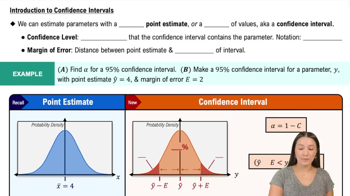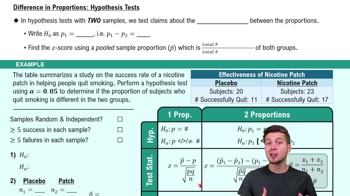Here are the essential concepts you must grasp in order to answer the question correctly.
Confidence Interval
A confidence interval is a range of values, derived from sample statistics, that is likely to contain the true population parameter with a specified level of confidence, typically expressed as a percentage. For example, a 95% confidence interval suggests that if we were to take many samples and construct intervals in the same way, approximately 95% of those intervals would contain the true population proportion.
Recommended video:
Introduction to Confidence Intervals
Proportion
In statistics, a proportion is a type of ratio that represents a part of a whole. It is calculated by dividing the number of favorable outcomes by the total number of outcomes. In the context of the survey, the proportion of respondents who believe the song is not too offensive can be calculated by dividing the number of 'not too offensive' responses by the total number of respondents.
Recommended video:
Difference in Proportions: Hypothesis Tests
Sample Size and Its Impact
Sample size refers to the number of observations or responses collected in a survey or experiment. A larger sample size generally leads to more reliable estimates of population parameters and narrower confidence intervals. In this case, the sample size of 1043 respondents provides a basis for estimating the proportion of the entire population that holds a particular belief about the song.
Recommended video:
Sampling Distribution of Sample Proportion






